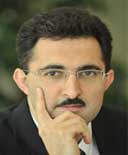Arab image in Turkey |
It is commendable that the Research Center for Islamic History, Art and Culture (IRCICA) has been tasked to review the history books of 22 Arab countries and of Turkey to make them more scientific and free from stereotyping and biases. Syria and Turkey did this in 2008, and a similar project is being conducted between Turkey and Iraq. Unfortunately, the political and ideological factors that shaped modern history fed into these prejudices with notorious references of each other’s history. The cleansing of textbooks from these “reconstructed images” is very important in eliminating the bias in young people in the early stages of education.
Increased mobility among countries may be another panacea for the image problem as well. We have seen how the visa liberalization agreement between Turkey and Syria, which was signed in 2009, boosted the positive image in the countries’ respective public opinions. Turkish tourists going to Syria more than doubled to 1.5 million in 2010, a year after the two countries abolished visa requirements between them, while 750,000 Syrians visited Turkey. Similar negotiations for visa-waiving agreements are also going on between Turkey and the UAE.
I am optimistic about the possibility of changing the perception of Arabs in a more positive way in Turkey in the coming years. As Turkish foreign policy has become much more engaged in the affairs of the Middle East and Africa, we have seen increased interest in the media with Arab-related issues as well. A variety of Turkish-Arab forums -- be it academic, professional or business-wise -- are being held at different venues. We send reporters to cover breaking news in the Arab streets or keep bureau chiefs in important Arab capitals to take the pulse of the region. Turkish media have become fairly diversified in the last decade and no longer just rely on Western sources when reporting on Arab events.








 Abdullah Bozkurt is Bureau-in-Chief and regular columnist for Today’s Zaman, Turkey’s leading English daily. He has been Bureau Chief in New York City covering the United Nations for the Turkish daily Zaman besides serving as Washington Representative for the paper, covering the State Department, Capitol Hill and Pentagon in the US capital. He has a Masters degree in international affairs from Columbia University in New York City.
Abdullah Bozkurt is Bureau-in-Chief and regular columnist for Today’s Zaman, Turkey’s leading English daily. He has been Bureau Chief in New York City covering the United Nations for the Turkish daily Zaman besides serving as Washington Representative for the paper, covering the State Department, Capitol Hill and Pentagon in the US capital. He has a Masters degree in international affairs from Columbia University in New York City.
Post new comment